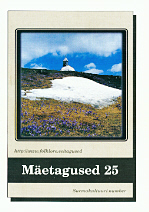Surmakultuuri suundumused Eestis: Surmaended
Trends in death culture in Estonia: death omens
Author(s): Tiia RistolainenSubject(s): Customs / Folklore
Published by: Eesti Kirjandusmuuseum
Summary/Abstract: The purpose of this article is to give an overview of the more widespread death omens in earlier community and to look for an answer to the question how - in the light of social changes - the changes in the mental world of people have influenced the attitude to death omens. Answering the question whether and why death omens have receded these days, the changing of death culture can be displayed. The source materials for the article were belief records from the Estonian Folklore Archives and the fieldwork material collected by the author. In the treatment of death omens I proceed from the thematic division based on predicting situations. Speaking of Estonian death omens, a general belief can be noticed that death comes when the time is due. This has also caused the function of Estonian death omens: people tried to anticipate what was awaiting the person and only when the person was dead, they tried to prevent the next death by avoiding contacts or reconciliation with the deceased. People tried to be prepared for death both for ethical and economic reasons. They thought that any death event is preceded by a premonition of any kind. By means of observation they tried to find signs, which would give evidence of the destiny of the sick person. An answer to that was looked for in life experiences and religion. There are a number of popular beliefs related to death omens. Primarily, the person attempted to find a solution in his daily life to the problem how long he was destined to live. Seasons of the year, weather, behaviour of domestic animals and fowl, extraordinary phenomena, etc. were associated with death omens. While some of the passive death omens are still topical today, active death omens have retreated. Omens have updated - supported by literature and the mass media. Nowadays death omens are not reflexive, they are believed to predict death to someone else, usually to relatives. Therefore, the development trend of death omens is directed away from oneself. In the current rationalistic world the sphere of beliefs is more hidden - believing is not considered appropriate.
Journal: Mäetagused. Hüperajakiri
- Issue Year: 2004
- Issue No: 25
- Page Range: 157-212
- Page Count: 56
- Language: Estonian

